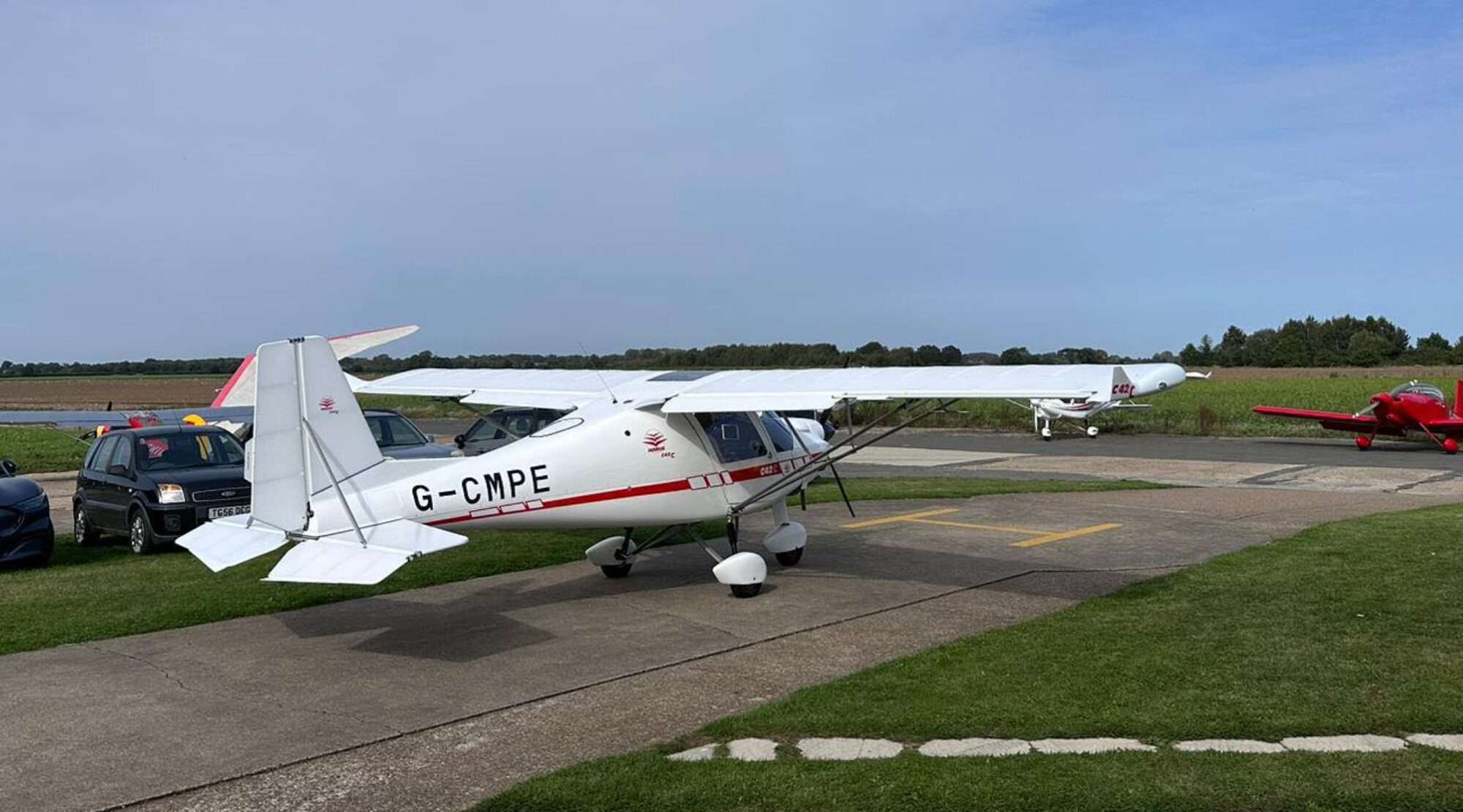Today, I had the remarkable opportunity to pilot the new Shark Microlight, currently undergoing the process for UK Microlight certification with the BMAA. I can encapsulate my experience with a single word: “incredible” or “wow” – both adequately describe this machine.
Before delving into my flight, I must extend my heartfelt thanks to Paul Hendry-Smith of The Light Aircraft Company, also known as TLAC, and Howard Barber, the test pilot for this fantastic opportunity.
The Shark arrived with a graceful landing, from this sleek aircraft, emerged Howard, an experienced pilot and instructor.

After exchanging greetings and catching up – I had flown with Howard previously in a different aircraft, a Cessna 150 – he briefed me on the aircraft and the embarkation process. Climbing into the cockpit, I couldn’t help but feel akin to Maverick, with the side stick to my right and the full glass cockpit ahead. The adjustable seat was a pleasant surprise, uncommon in a Microlight. With the seat adjusted, seatbelt secured, and canopy closed, I felt privileged to occupy the front seat – a privilege not granted to everyone. After conducting some checks, I initiated the start sequence, and the 912ULS (100Hp) engine purred to life. The two blades of the large propeller created a satisfying yellow disc, reminiscent of scenes from old war films depicting views from a Spitfire. Taxiing out, I steered using the rudder and differential brakes. The brakes held firmly during the power check at the full recommended Rotax power of 4,000 rpm.
After completing additional checks, I taxied to the runway, opened the electronically controlled cowl flap, and lined up. With a few words of wisdom from Howard, and prop set fully fine, I applied full power, and soared into the air. After retracting the flaps, undercarriage and adjusting the throttle and prop, we climbed swiftly, akin to a rocket. Levelling out at 4,000 feet, we accelerated to 150 knots, with the conveniently located trim control on the stick I adjusted for level flight.



The Shark proved remarkably stable yet highly responsive. Executing 45-degree turns in both directions felt exhilaratingly smooth. It was time to hand over control to Howard, allowing me to capture some photos for my blog. Howard demonstrated the Shark’s capabilities, executing 60-degree bank turns and we pulled a few G’s, effortlessly manoeuvring around the clouds. Then it was my turn again – a rapid descent followed by a high-speed, low pass over the airfield, concluding with a swift climb to bleed off speed before entering the circuit for landing. However, the blinding sun angle during approach in this unfamiliar aircraft prompted me to request Howard to land this remarkable aircraft.

As I sit at my computer hours later, a broad smile still graces my face. In my opinion, this is not an aircraft for novice pilots. Nonetheless, for those with experience, after the five-hour conversion, the Shark promises to be an aircraft that will keep you smiling and turning heads for a long time.


